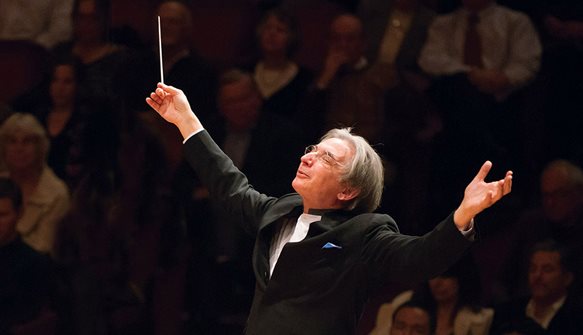
REVELATIONS OF MAHLER’S ‘RESURRECTION’ SYMPHONY
As the Apt Season Finale in S.F.
By Paul Hertelendy
artssf.com, the independent observer of San Francisco Bay Area music and dance
Week of July. 6-13, 2016
Vol. 18, No. 76
Mahler’s Second Symphony is like the month of March twice over: It comes in like a lion, continues like a lamb, and goes out, once again, like a lion.
It was thus in the interpretation of Michael Tilson Thomas and the San Francisco Symphony this weekend, one of the very finest in his two decades here. When heard July 1, the music had a rare aura about it, as if inspired by intervention of the Almighty, who dominates the choral text of the “Resurrection” finale. This aura sank in with various symphony patrons too who talked about it afterward, uniquely moved by the intense, no-intermission, hour-and-a-half communion.
Mahler achieved new, unprecedented dimensions in his work—-in the complexity, in the many moods and emotions, in the sheer length and sheer number of players (divided string parts, two timpanists, two harpists, offstage supplementary brass, etc.). This is one of the sunniest creations by the moody, melancholic Mahler, once you get past the opening C-minor despair. As rendered here by the elite SFS musicians and MTT, the work was quite simply resplendent in its magnificence.
Much to the credit of the players, despite the slower pace (some 90 minutes each night, instead of the textbook “typical” 80), there was neither lagging nor dragging.
You could critique parts of the outpouring—-MTT did not provide the 5-minute pause after the opening movement to clear the air, as had predecessor Edo de Wart, and as Mahler himself calls for in the score; and the elite SFS Chorus as usual forgot most of the consonants in the text. But overall, this was a nuanced as I’ve ever heard it, from the placidity of the three middle movements to the explosiveness on the outer banks.
MTT heightened the contrasts, from the in-your-face effusiveness of the opening to the pizzicato and pianissimos of the inner movements.
Mahler worked to veer away from Beethoven’s Ninth. In the placid movements, he offers a sublime song “Urlicht” (Primeval Light) for mezzo, in this case the ethereal Kelley O’Connor, who should offer lessons in good German diction and sensitive portrayal to singers while here.
And unlike Beethoven’s secular finale, Mahler follows with a choral finale that is a display of faith, but non-denominational, not necessarily even Christian. Where Beethoven offered a love-everybody message, Mahler hewed to overcoming death by approaching the divine. For the brilliant Mahler, themes on death were recurrent in his music, as he suffered from a congenitally weak heart and died at the age of only 50.
And yet, what a work of genius he left us. And what a superb affirmation to conclude the 2015-2016 season!!
MUSIC NOTES—Among the happy sights and sounds of the season finale was the reappearance of the senior member of the SFS, Michael
Grebanier, as principal cellist, after months of absence.
These San Francisco Symphony concerts resume in Sept. 2016 at Davies Hall, S.F. For info: (415) 864-6000, or go online. Broadcasts on KDFC-FM (90.3 and others) at 8 p.m. on the second Tuesday following.
©Paul Hertelendy 2016
#
Paul Hertelendy has been covering the dance and modern-music scene in the San Francisco Bay Area with relish — and a certain amount of salsa — for years.
These critiques appearing weekly (or sometimes semi-weekly, but never weakly) will focus on dance and new musical creativity in performance, with forays into books (by authors of the region), theater and recordings by local artists as well.
#